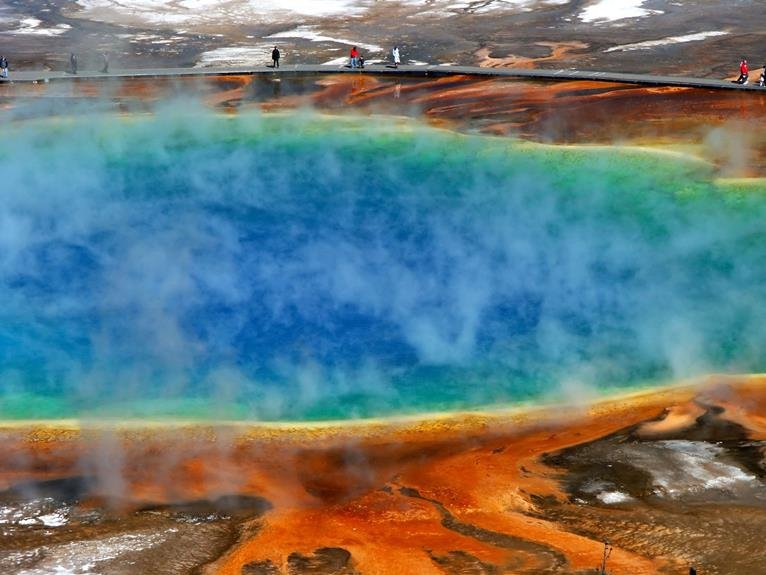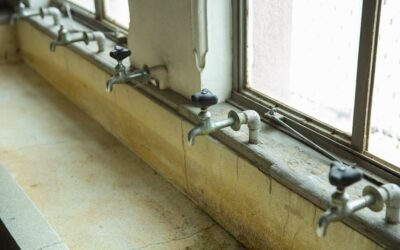Did you know that boiling water can be a powerful tool in killing mold?
Discover the science behind this method and learn about its potential benefits and limitations.
In this article, we will explore how boiling water can effectively remove mold and provide tips for using it safely and efficiently.
So if you're looking for an effective, chemical-free solution to tackle mold growth, boiling water might just be the answer you've been searching for.
Key Takeaways
- Mold requires moisture, warmth, and organic matter to grow and reproduce.
- Boiling water generates high temperatures that disrupt the cellular structure of mold.
- Boiling water is a simple and cost-effective method to kill mold spores.
- Boiling water may not be suitable for delicate materials or surfaces that can't tolerate heat.
Understanding Mold Growth
To better understand mold growth, you should start by learning about the conditions under which it thrives. Mold requires three main elements to grow and reproduce: moisture, warmth, and organic matter.
Moisture is a crucial factor as it provides the necessary water source for mold to thrive. The presence of excessive humidity, water leaks, or condensation can create a moist environment ideal for mold growth.
Temperature also plays a significant role in mold growth. Most molds thrive in temperatures between 77 and 86 degrees Fahrenheit (25-30 degrees Celsius). However, some molds can tolerate temperatures as low as 32 degrees Fahrenheit (0 degrees Celsius) or as high as 122 degrees Fahrenheit (50 degrees Celsius). Therefore, maintaining a consistent temperature within the recommended range can help prevent mold growth.
Lastly, mold requires organic matter as a food source. This includes materials such as wood, paper, fabric, and even dust. Mold spores naturally exist in the environment, and when they settle on organic materials, they can begin to grow and colonize.
Understanding these conditions is crucial in preventing and controlling mold growth. By addressing moisture issues, maintaining appropriate temperature levels, and minimizing the presence of organic matter, you can effectively limit the conditions under which mold thrives.
The Science Behind Boiling Water
Boiling water can be a powerful tool in combating mold, as it utilizes the properties of heat and steam to effectively eliminate mold spores. The science behind boiling water lies in its ability to generate high temperatures that can disrupt the cellular structure of mold, ultimately leading to its demise. Here's a closer look at the scientific principles involved:
- Thermal energy: When water reaches its boiling point, it undergoes a phase change from a liquid to a gas, releasing thermal energy in the form of steam. This energy is transferred to the surrounding environment, including any mold-infested surfaces.
- Heat transfer: The high temperature of boiling water causes heat to transfer rapidly to the mold, raising its internal temperature. This sudden increase in temperature can denature proteins and enzymes within the mold cells, rendering them unable to function properly.
- Steam penetration: As water boils, it produces steam that can penetrate porous materials, such as walls or fabrics, where mold may be lurking. The steam can reach deep into these materials, effectively killing mold spores that may be present.
Potential Benefits of Using Boiling Water
Using boiling water can provide numerous benefits when it comes to combating mold in your home. Boiling water is a simple and cost-effective method that can help kill mold spores and prevent their growth. One of the main advantages of using boiling water is its ability to penetrate porous surfaces, such as wood and fabrics, effectively killing mold that may be hidden beneath the surface. The high temperature of boiling water (212°F or 100°C) is known to denature proteins, disrupt cell membranes, and ultimately kill mold. Additionally, boiling water can help remove mold stains from surfaces, making them look clean and fresh.
Another benefit of using boiling water is its versatility. It can be used on a wide range of surfaces, including countertops, tiles, and bathroom fixtures. Boiling water can also be used to clean and disinfect tools and equipment that may have come into contact with mold-infested areas. Moreover, boiling water is safe and environmentally friendly, as it doesn't involve the use of harsh chemicals that may be harmful to humans or pets.
However, it's important to note that boiling water may not be effective in eliminating mold growth in all situations. It's most effective for small areas of mold infestation and shouldn't be used as the sole method of mold remediation for larger or more severe cases. In such instances, it's recommended to seek professional assistance to ensure proper removal and prevention of mold growth.
Limitations of Boiling Water for Mold Removal
Are there any drawbacks to relying solely on boiling water for mold removal?
While boiling water can be an effective method for killing mold, it does have its limitations. Here are some key points to consider:
- Limited reach: Boiling water can only be used on mold-infested surfaces that can tolerate heat. It may not be suitable for delicate materials or surfaces that could be damaged by high temperatures.
- Surface-level treatment: Boiling water is most effective at killing mold on the surface it comes into direct contact with. However, it may not penetrate deep into porous materials, such as drywall or wood, where mold can grow and spread unseen.
- Inefficiency against spores: Boiling water may kill mold spores on contact, but it can't eliminate them entirely. Mold spores can easily become airborne and spread to other areas, leading to recurring mold growth.
- Lack of residual protection: Unlike some chemical cleaners, boiling water doesn't leave behind a residual barrier to prevent future mold growth. This means that mold may reappear in the same area if the underlying moisture problem isn't addressed.
- Safety concerns: Working with boiling water carries the risk of burns and scalds. It's essential to take precautions and use appropriate protective gear when using boiling water for mold removal.
Understanding the limitations of boiling water for mold removal can help you make informed decisions about the most effective methods to combat mold in your environment.
Tips for Safely and Efficiently Using Boiling Water
To safely and efficiently use boiling water for mold removal, it is important to follow these tips:
| Tips for Safely and Efficiently Using Boiling Water |
|---|
| 1. Use protective gear |
| Wear gloves, goggles, and a mask to protect yourself from burns and mold spores. |
| 2. Boil the water |
| Bring a pot of water to a rolling boil on the stove. Ensure there is enough water to cover the affected area. |
| 3. Apply the boiling water |
| Carefully pour the boiling water over the mold-infested surface. Start from the top and work your way down. |
These tips will help ensure your safety and maximize the effectiveness of boiling water for mold removal. When using boiling water, it is crucial to wear appropriate protective gear to prevent burns and minimize exposure to mold spores. Boiling the water kills the mold and makes it easier to remove. To apply the boiling water, carefully pour it over the affected area, starting from the top and working your way down. Be cautious not to spill or splash the boiling water, as it can cause burns. Remember to handle the water with care and follow proper safety precautions throughout the process.
Conclusion
In conclusion, while boiling water can effectively kill mold, it has its limitations. The high temperature of boiling water can destroy mold spores and prevent further growth. However, it may not be suitable for all surfaces and may not reach deep into porous materials.
Additionally, caution should be exercised when using boiling water to avoid burns or damage to delicate surfaces. It's important to consider other mold removal methods in conjunction with boiling water for more effective and comprehensive results.






0 Comments